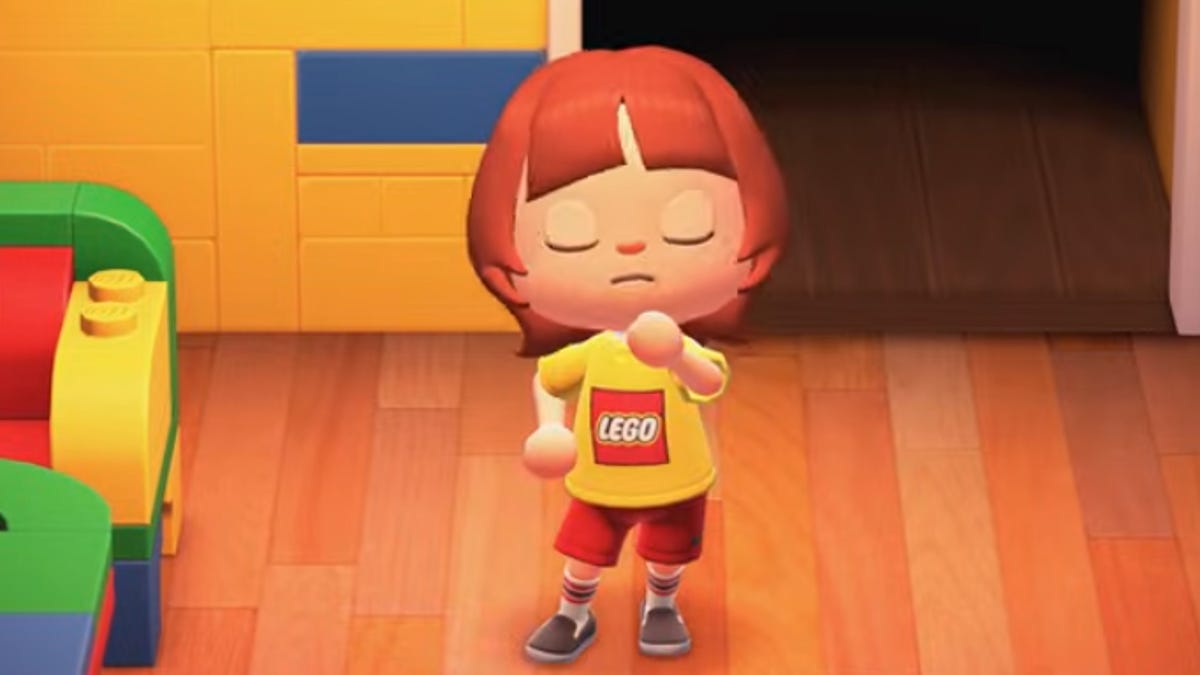Technologies
When will kids under 5 be eligible for the COVID vaccine?
Vaccines for youngest children are close to approval. What vaccines are available and when will they be ready?

The Food and Drug Administration will meet next week to decide whether or not to authorize the Pfizer/BioNTech vaccine for children age 6 months to 4 years, but government planning for the pediatric vaccine rollout is already underway.
At a Wednesday briefing, Jeff Zients, coordinator for the White House COVID-19 Response Team said, «We’ve secured enough vaccine supply for all kids in this age group — all 18 million. We have enough needles, syringes, and kits. And these are all specially formulated, are made for this age group to send alongside the vaccine.»
Updated Sunday, the Centers for Disease Control and Prevention’s «Pediatric COVID-19 Vaccination Operational Planning Guide» indicates that the agency has 10 million vaccine doses ready for dispersal, and that state and local health officials could start receiving doses as early as Feb. 21.
Last week, Pfizer and BioNTech submitted data to the FDA for authorization of their COVID-19 vaccine for children 6 months through 4 years old. While the vaccine for children under 5 is expected to be a three-dose vaccine series (it’s one-tenth the volume of Pfizer’s vaccine for people 12 and up), the FDA asked the companies to submit data on the first two doses as part of a «rolling submission» process.
In December, Pfizer announced that while two doses of the vaccine were effective in children ages 6 months to 2 years, two shots failed to promote a strong enough immune response in children ages 2 through 4 years. This prompted the company to start testing a three-dose version of the vaccine for children under 5.
Kids as young as 5 have been able to be vaccinated against COVID-19 since October 2021. The Kaiser Family Foundation reports that 28.1% of kids 5-11 have received at least one vaccine shot as of Jan. 18. Read on to learn everything you need to know about COVID-19 vaccines for kids under 5.
Also, learn about whether we’ll need a fourth booster shot, the latest on long COVID and the possibility of a vaccine that works against all COVID-19 variants.
When can babies and children under 5 get the vaccine?
Now that Pfizer has submitted data to the FDA, a meeting of experts that gathers to discuss safety and effectiveness data and vote on whether or not the FDA should authorize a vaccine is scheduled for Feb. 15. (The meeting is open to the public and you can tune in here or on the agency’s YouTube channel.)
If the FDA does authorize Pfizer’s vaccine for children as young as 6 months old, the CDC typically goes through the same process: An outside panel of health experts will discuss the benefits and risks of recommending the vaccine to children under 5 years old. If they vote to recommend Pfizer’s vaccine for the younger age group, the CDC’s director will likely accept the panel’s decision and the small doses of Pfizer’s COVID-19 vaccine for kids will become available in pediatricians’ offices or other clinics.
The CDC is expected to move quickly, assuming the FDA does authorize the first two doses of the anticipated three-dose vaccine series. If research finds a third dose is necessary for children under 5, it will be authorized and available after children have already started the vaccine series.
How is Pfizer’s child vaccine for babies and young kids different?
Pfizer and BioNTech’s vaccine for children 6 months through 4 years comes in two doses that are one-tenth the volume of the vaccine for people age 12 and up. A third 3-microgram dose is being researched right now and may be authorized in the near future.
The vaccine for kids 5 to 11 is one-third the dose given to everyone 12 and up, and it’s delivered in two doses. Pfizer’s vaccine for kids can also be stored for up to 10 weeks in a fridge, making it easier to administer, and the cap on the vial is orange instead of purple and gray to avoid mix-ups.
And if it helps to put your kids at ease, the needle used to administer the child’s dose of vaccine is also smaller.
For more information about Pfizer’s vaccine for children ages 5 to 11, check out this fact sheet from the FDA.
Can my child get a COVID booster?
Children as young as 12 can now get a booster dose of Pfizer’s COVID-19 vaccine, given at least five months after their primary vaccination series.
Most kids younger than 12 can’t get a booster, although the CDC recommends a third dose of the Pfizer vaccine for children 5 and up who are immunocompromised. They’re eligible for a third shot 28 days after their second dose.
Where can my kid get a booster shot?
Since Pfizer’s COVID-19 vaccine is the lone vaccine approved for people under 18, it’s generally only available in doctor’s offices and public health clinics, not pharmacies and other mass vaccination sites.
Call your pediatrician or local health clinic for a recommendation on where to go. Parents may also text their ZIP code to 438829 or use this vaccine finder link to find a clinic near them that has the child vaccine available.
Do kids really need a COVID-19 vaccine?
According to a report from the American Academy of Pediatrics, children made up 25% of reported COVID-19 cases for the week ending Feb. 3. (The AAP says the definition of «child» varies by the states reporting.) While pediatric cases were lower than in January, child COVID-19 were «double the peak level of the delta surge in 2021,» the AAP reported.
While it’s true children are much less likely to get severely sick from the virus than adults, some children have died or been hospitalized with the virus. An infection, even a mild case, requires quarantining and potentially sending classmates out of the classroom and back to remote learning. And kids can experience dangerous complications from COVID-19, including long COVID and MIS-C.
There are also racial disparities in the severity of how sick children get from COVID-19: Kids ages 5 to 11 who are Black, Native American or Hispanic are three times more likely to be hospitalized with COVID-19 than white children, according to an FDA advisory panel presentation. Of that group, about 1 in 3 will require admission to an intensive care unit.
Are booster shots safe for children?
In a statement following its authorization of booster doses for kids 12 to 15, the FDA said it reviewed real-world data from more than 6,300 children in Israel, ages 12 to 15, who received a booster shot at least five months after their second dose of Pfizer.
No additional safety concerns were reported to date in those individuals, according to the FDA.
«These additional data enabled the FDA to reassess the benefits and risks of the use of a booster in the younger adolescent population in the setting of the current surge in COVID-19 cases,» the agency said. «The data shows there are no new safety concerns following a booster in this population.»
What are the side effects? Is the COVID vaccine safe for kids?
Vaccine side effects in kids ages 5 to 11 are mostly mild and similar to those adults may experience, according to the CDC, including soreness at the injection site, fever, muscle soreness, nausea and fatigue. In a Dec. 13 report from the agency, the CDC reviewed reports from safety monitoring systems on more than 8 million doses of Pfizer’s vaccine given to kids ages 5 to 11, confirming that children’s immune systems respond well to the vaccine with common mild side effects, and that serious adverse events are rarely reported.
Inflammation of the heart muscle, known as myocarditis, and of the muscle’s outer lining, called pericarditis, are rare and typically mild side effects linked to the Moderna and Pfizer vaccines, mostly in adolescent males and young men ages 12 to 29. (Myocarditis can also occur after infection with COVID-19.)
In one study, the CDC said that 54 recipients out of a million males ages 12 to 17 experienced myocarditis following the second dose of Pfizer-BioNTech’s Comirnaty vaccine. In contrast, kids ages 5 to 11 who catch COVID-19 have a higher risk of multisystem inflammatory syndrome, or MIS-C, a potentially serious complication involving inflammation of the heart, lungs, kidneys, brain, skin, eyes or other organs.
«The bottom line is that getting COVID is much riskier to the heart than anything in this vaccine, no matter what age or sex you are,» Dr. Matthew Oster, a pediatric cardiologist at Children’s Healthcare of Atlanta, told the CDC in November as reported by ABC News.
Do I need to give consent for my young child to get vaccinated?
Yes, parents generally need to consent to their children receiving medical care, including Pfizer’s COVID-19 vaccine. This is especially true for younger children.
However, depending on which state you live in, there may be a legal precedent for teens and other kids to request the vaccine without parental permission: Tennessee’s vaccine director, Michelle Fiscus, was fired in August allegedly in part for sending out a memo detailing Tennessee’s «mature minor doctrine,» which explains how minors may seek medical care without the consent of their parents.
If my child has a serious health condition, can they get a third shot?
The CDC recommended a third dose for children as young as 5 who are «moderately to severely» immunocompromised, 28 days after their second shot. This guidance for immunocompromised children (including kids who’ve had an organ transplant or are taking medications that suppress the immune system) is in line with guidance for adults whose bodies don’t mount a good immune response to the COVID-19 vaccines.
My child has allergies. Can they get the vaccine?
Yes, though you might be asked to stick around the waiting room so health care providers can monitor them for (extremely rare) allergic reactions that can occur after any vaccination.
«If the child has a history of anaphylaxis or other severe allergies, then the observation time after the injection may be 30 minutes instead of 15,» said Dr. Anne Liu, an infectious disease specialist with Stanford Hospital and Clinics and the Lucile Packard Children’s Hospital. Children who have been prescribed an EpiPen for any reason should bring it to their vaccine appointment, Liu added.
As with adults, children with an allergy to an ingredient in Pfizer’s COVID-19 shouldn’t take it. You can find a list of ingredients in Pfizer’s vaccine for kids ages 5 to 11 on the FDA’s fact sheet.
Can my child get the COVID-19 shot at the same time as other vaccines?
According to the CDC, your child may get other vaccines when they go in for their COVID shot without waiting 14 days between appointments. Flu shots can be given to children ages 6 months and older.
The information contained in this article is for educational and informational purposes only and is not intended as health or medical advice. Always consult a physician or other qualified health provider regarding any questions you may have about a medical condition or health objectives.
Technologies
Live-Action ‘Call of Duty’ Movie Reportedly Being Co-Written by Taylor Sheridan
The Yellowstone co-creator will reportedly team up with Peter Berg on the Paramount film.

Yellowstone, Landman and, now, Call of Duty. Taylor Sheridan, co-creator of the aforementioned hit shows, will co-write Paramount and Activision’s upcoming live-action video game adaptation, according to a report from Variety on Thursday.
Peter Berg will also co-write and direct the movie, which was announced last month. Berg previously directed films including 2018’s Mile 22, 2012’s Battleship and 2013’s Lone Survivor, while Sheridan’s movie credits include 2016’s Hell or High Water and 2017’s Wind River. Berg, Sheridan and David Glasser will produce the Call of Duty film.
Don’t miss any of our unbiased tech content and lab-based reviews. Add CNET as a preferred Google source.
Call of Duty is a first-person shooter military video game series that debuted in 2003. CNET senior writer David Lumb calls it «arguably the biggest shooter franchise in gaming, with millions of players picking up every year’s new entry to the series.»
Lumb said the franchise is known for its bombastic single-player campaigns, which feature globe-spanning plots that rival those of the Mission Impossible films. «A Call of Duty movie has a lot of material to draw from,» Lumb said.
He also noted that Berg’s direction of Lone Survivor would fit the grim military heroism of Call of Duty, while Taylor Sheridan’s spate of neo-Western films and shows could lend a frontier adventurism to the film.
«Their collective works seemingly harmonize with the jingoistic pro-military tune of Activision’s shooter franchise — which is probably a good thing for Call of Duty fans,» Lumb concluded.
A release announcing Paramount and Activision’s film deal teased that it’ll be «designed to thrill its massive global fan base by delivering on the hallmarks of what fans love about the iconic series, while boldly expanding the franchise to entirely new audiences.» It didn’t include cast or plot information.
The update follows recent news that Sheridan is leaving Paramount for NBCUniversal. Paramount did not immediately respond to a request for comment.
Technologies
US Government Urges Total Ban of Our Most Popular Wi-Fi Router
Technologies
Animal Crossing Update Adds Lego Furniture, With a Switch 2 Version Arriving the Same Day
Fans of Animal Crossing will have a reason to go back to their island.

Animal Crossing fans just received a big surprise, and it’s not just a new content update. A Switch 2 version is on its way.
Animal Crossing: New Horizons will receive its first big update in three years, according to a post from Nintendo on Thursday. The update, labeled 3.0, will roll out on Jan. 15, the same day the Switch 2 version of the game will be available for purchase.
Released for the original Switch back in 2020, New Horizons was the first Animal Crossing game to come to a Nintendo console since 2008’s Animal Crossing: City Folk for the Nintendo Wii.
Nintendo regularly updated New Horizons for two years after its release, but stopped at update 2.0.6 released in November 2022. Two updates were added earlier in the year to prepare the game for playability on the Switch 2.
Animal Crossing 3.0 Update
In the 3.0 update coming on Jan. 15, a new hotel is opening. Players can help bring in guests to stay at the hotel by decorating guest rooms and dressing up mannequins to sell resort clothing.
For those who haven’t touched New Horizons in years, a Reset Service will be available. Players can have their island cleaned up, and items can be stored away or trashed for those who want a clean slate.
Players with a Nintendo Switch Online membership will have access to up to three islands, where they can explore and do as they please. These new areas are available on Slumber Island. It’s up to the player to decide how the island will look, what items or plants are on it and even which characters will be found on the island. Players can also invite friends to build it together.
New Horizons will feature special collaborations and Nintendo retro gear. Lego items will be available in the update for players to decorate their homes with or clothing to dress up their villagers with. Retro Nintendo consoles, such as the NES and Game Boy, can also be used as decorative items.
If the player has a Switch Online subscription, some classic titles such as Ice Climbers and Dr. Mario can be played via these in-game devices. There are also special items based on The Legend of Zelda and Splatoon series when players tap their amiibo from those games onto the Switch while playing.
Animal Crossing: New Horizons on Switch 2
Switch 2 owners can get in on the digital life game with Animal Crossing: New Horizons — Nintendo Switch 2 Edition. Not only will this new version come with updated graphics, including 4K resolution in TV mode, but it will also add special features that can only be done on the newest console.
One of the features is mouse controls for the Joy-Con 2. Players will be able to use the controller as a mouse to decorate indoors, create custom designs and write handwritten messages for the bulletin board.
Residents in the game can now be found by saying their name into the Switch 2’s built-in microphone while using the megaphone in the game. Multiplayer has also improved dramatically, with 12-player sessions available for those playing on the new edition, and CameraPlay is supported to allow players to see one another.
Animal Crossing: New Horizons for the Nintendo Switch 2 will be available for purchase on Jan. 15 for $65. Owners of the original Switch version of New Horizons can upgrade to the Switch 2 version for $5.
-

 Technologies3 года ago
Technologies3 года agoTech Companies Need to Be Held Accountable for Security, Experts Say
-

 Technologies3 года ago
Technologies3 года agoBest Handheld Game Console in 2023
-

 Technologies3 года ago
Technologies3 года agoTighten Up Your VR Game With the Best Head Straps for Quest 2
-

 Technologies4 года ago
Technologies4 года agoVerum, Wickr and Threema: next generation secured messengers
-

 Technologies4 года ago
Technologies4 года agoBlack Friday 2021: The best deals on TVs, headphones, kitchenware, and more
-

 Technologies4 года ago
Technologies4 года agoGoogle to require vaccinations as Silicon Valley rethinks return-to-office policies
-

 Technologies4 года ago
Technologies4 года agoOlivia Harlan Dekker for Verum Messenger
-

 Technologies4 года ago
Technologies4 года agoiPhone 13 event: How to watch Apple’s big announcement tomorrow
